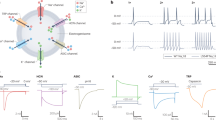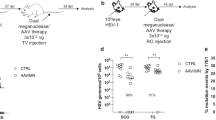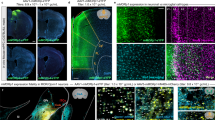Abstract
This paper reviews work by Yeomans and Wilson in the area of herpes vector-mediated gene transfer to sensory neurons. Beginning in 1997, these researchers have published a number of papers describing and exploiting this technology in altering the phenotype of pain-sensing neurons (nociceptors). Their initial work, continuing to the present, inserted a transgene cassette encoding the human preproenkephalin gene into the thymidine kinase locus under control of a cytomegalovirus promoter. This vector induced enkephalin expression selectively in the nociceptors innervating the tissue onto which it was applied, producing a profound analgesic and antihyperalgesic in acute and chronic pain models in both rodents and non-human primates. An improved version of this vector is now in clinical trials. In addition to inducing the de novo expression of foreign transgenes, this group also investigated the utility of herpes vectors in altering the endogenous genome of nociceptors. Thus, they inserted antisense sequences for genes of interest in the physiology of these neurons and successfully and selectively knocked down expression of several proteins known or thought to be involved in various pain states, including calcitonin gene-related peptide and μ-opioid receptors. They also used similar techniques to investigate the involvement of acid-sensing ion channels and Nav1.7 sodium channel in different pain states. These experiments uniquely allowed for spatially and temporally selective investigations into the function of these proteins in pain, highly valuable information in target validation for therapy development.
This is a preview of subscription content, access via your institution
Access options
Subscribe to this journal
Receive 12 print issues and online access
$259.00 per year
only $21.58 per issue
Buy this article
- Purchase on Springer Link
- Instant access to full article PDF
Prices may be subject to local taxes which are calculated during checkout







Similar content being viewed by others
References
Wilson SP, Yeomans DC, Bender MA, Lu Y, Goins WF, Glorioso JC . Antihyperalgesic effects of infection with a preproenkephalin-encoding herpes virus. Proc Natl Acad Sci USA 1999; 96: 3211–3216.
Yeomans DC, Jones T, Laurito CE, Lu Y, Wilson SP . Reversal of ongoing thermal hyperalgesia in mice by a recombinant herpesvirus that encodes human preproenkephalin. Mol Ther 2004; 9: 24–29.
Yeomans DC, Lu Y, Laurito CE, Peters MC, Vota-Vellis G, Wilson SP et al. Recombinant herpes vector-mediated analgesia in a primate model of hyperalgesia. Mol Ther 2006; 13: 589–597.
Yang H, McNearney TA, Chu R, Lu Y, Ren Y, Yeomans DC et al. Enkephalin-encoding herpes simplex virus-1 decreases inflammation and hotplate sensitivity in a chronic pancreatitis model. Mol Pain 2008; 4: 8.
Lu Y, McNearney TA, Lin W, Wilson SP, Yeomans DC, Westlund KN . Treatment of inflamed pancreas with enkephalin encoding HSV-1 recombinant vector reduces inflammatory damage and behavioral sequelae. Mol Ther 2007; 15: 1812–1819.
Lu Y, McNearney TA, Wilson SP, Yeomans DC, Westlund KN . Joint capsule treatment with enkephalin-encoding HSV-1 recombinant vector reduces inflammatory damage and behavioural sequelae in rat CFA monoarthritis. Eur J Neurosci 2008; 27: 1153–1165.
Jones TL, Sweitzer SM, Wilson SP, Yeomans DC . Afferent fiber-selective shift in opiate potency following targeted opioid receptor knockdown. Pain 2003; 106: 365–371.
Jones TL, Sweitzer SM, Peters MC, Wilson SP, Yeomans DC . GABAB receptors on central terminals of C-afferents mediate intersegmental Adelta-afferent evoked hypoalgesia. Eur J Pain 2005; 9: 233–242.
Tzabazis AZ, Pirc G, Votta-Velis E, Wilson SP, Laurito CE, Yeomans DC . Antihyperalgesic effect of a recombinant herpes virus encoding antisense for calcitonin gene-related peptide. Anesthesiology 2007; 106: 1196–1203.
Yeomans DC, Levinson SR, Peters MC, Koszowski AG, Tzabazis AZ, Gilly WF et al. Decrease in inflammatory hyperalgesia by herpes vector-mediated knockdown of Nav1.7 sodium channels in primary afferents. Hum Gene Therapy 2005; 16: 271–277.
Sluka KA, Radhakrishnan R, Benson CJ, Eshcol JO, Price MP, Babinski K et al. ASIC3 in muscle mediates mechanical, but not heat, hyperalgesia associated with muscle inflammation. Pain 2007; 129: 102–112.
Author information
Authors and Affiliations
Corresponding author
Rights and permissions
About this article
Cite this article
Yeomans, D., Wilson, S. Herpes virus-based recombinant herpes vectors: gene therapy for pain and molecular tool for pain science. Gene Ther 16, 502–508 (2009). https://doi.org/10.1038/gt.2009.25
Received:
Accepted:
Published:
Issue Date:
DOI: https://doi.org/10.1038/gt.2009.25
Keywords
This article is cited by
-
Gene therapy for chronic pain: emerging opportunities in target-rich peripheral nociceptors
Nature Reviews Neuroscience (2023)
-
MnSOD mediated by HSV vectors in the periaqueductal gray suppresses morphine withdrawal in rats
Gene Therapy (2017)
-
Nasal application of HSV encoding human preproenkephalin blocks craniofacial pain in a rat model of traumatic brain injury
Gene Therapy (2017)
-
Current Gene Therapy using Viral Vectors for Chronic Pain
Molecular Pain (2015)
-
The Role of TNFα in the Periaqueductal Gray During Naloxone-Precipitated Morphine Withdrawal in Rats
Neuropsychopharmacology (2011)



